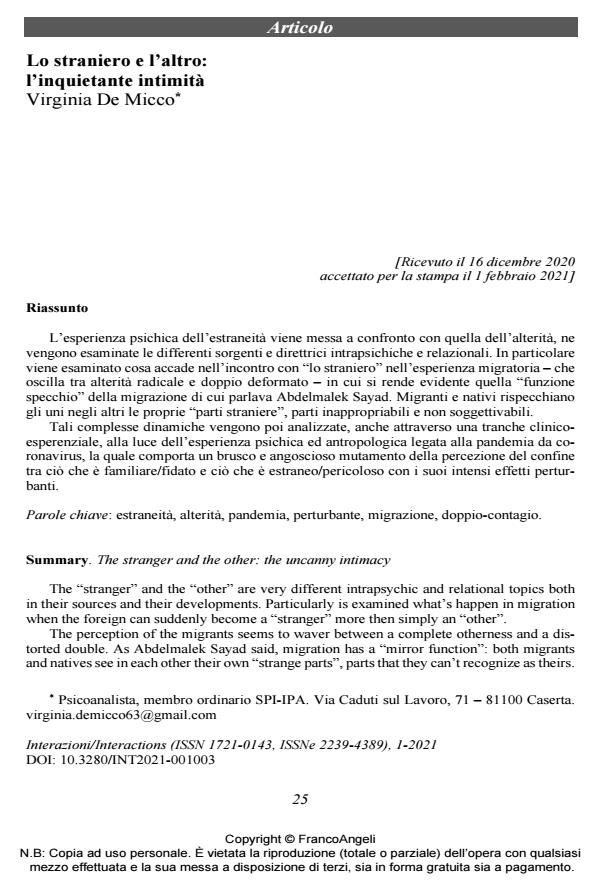The stranger and the other: the uncanny intimacy
Journal title INTERAZIONI
Author/s Virginia De Micco
Publishing Year 2021 Issue 2021/1
Language Italian Pages 17 P. 25-41 File size 201 KB
DOI 10.3280/INT2021-001003
DOI is like a bar code for intellectual property: to have more infomation
click here
Below, you can see the article first page
If you want to buy this article in PDF format, you can do it, following the instructions to buy download credits

FrancoAngeli is member of Publishers International Linking Association, Inc (PILA), a not-for-profit association which run the CrossRef service enabling links to and from online scholarly content.
The "stranger" and the "other" are very different intrapsychic and relational topics both in their sources and their developments. Particularly is examined what’s happen in migration when the foreign can suddenly become a "stranger" more then simply an "other". The perception of the migrants seems to waver between a complete otherness and a dis-torted double. As Abdelmalek Sayad said, migration has a "mirror function": both migrants and natives see in each other their own "strange parts", parts that they can’t recognize as theirs. All this is examined in the complex situation of the coronavirus pandemic, with its deep psychic and anthropological consequences due to the sudden alteration of the borderline be-tween the familiar/safe and the unfamiliar/dangerous with its anxiuos and uncanny effects that seem to transform any "other" in a "stranger".
Keywords: Stranger, other, pandemic, uncanny, migration, double-contagion
- Psychodynamic study of relationships between UASC and social workers in second reception facilities in Italy Daniela Cantone, Emanuele Bartiromo, Dario Savastano, Marialaura Senese, Carmela Guerriera, in Children and Youth Services Review 108613/2025 pp.108613
DOI: 10.1016/j.childyouth.2025.108613
Virginia De Micco, Lo straniero e l’altro: l’inquietante intimità in "INTERAZIONI" 1/2021, pp 25-41, DOI: 10.3280/INT2021-001003